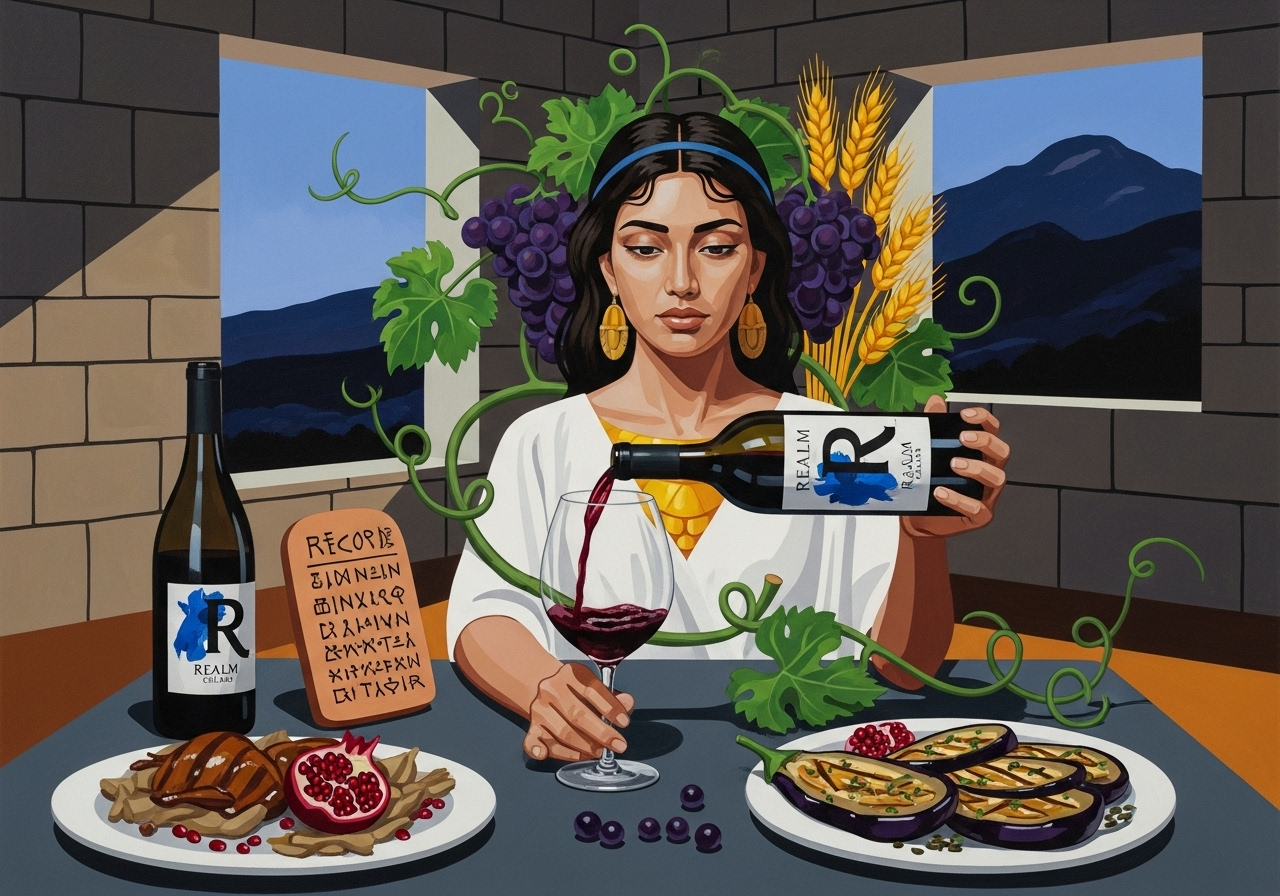Under the Silver Vine: Realm Cellars Moonracer 2016
A poetic exploration of [Realm Cellars Moonracer 2016 food pairing]—from barley risotto to beet terrine, each dish echoing the vine’s quiet strength.

I pour the wine and the surface ripples—moonlight caught in garnet. It breathes slowly, like a creature remembering its own name. The scent rises: cassis, black fig, cedar bark, a flicker of graphite and crushed violet. I let it wake for an hour, decanting until the tightness eases. At 17 °C, in a wide-bowled glass, it moves from silence into speech—a language of shadow and light, of patience rewarded. This is a wine that remembers the mountain’s heart. I remember it too.
The Soil of Stars
Moonracer is born from the Stags Leap District, a narrow cradle in Napa Valley where volcanic soils meet the cooling winds of the bay. Realm Cellars’ vineyard lies on an alluvial fan of ash and stone, where vines struggle for water and find meaning in resistance. Under Benoit Touquette’s care, Cabernet Sauvignon leads with grace, joined by Merlot and Petit Verdot in supporting harmony. The 2016 vintage—a year of steady light and long, patient ripening—delivered fruit of clarity and quiet power. The wine carries both gravity and music, like a hymn whispered to basalt.
A Voice of Stone and Silk
In the glass, Moonracer is both muscle and melody. The tannins—fine as powdered graphite—frame ripe fruit without weight. Acidity glimmers through layers of blackcurrant, cocoa husk, and iron-rich earth. The finish is long, deliberate, mineral. If you listen closely, you hear the echo of the soil itself. I once recorded such whispers on clay tablets, when the vine was still sacred to the gods; they spoke the same truths then: balance, patience, and depth.
Firelight and the Vine’s Memory
The first pairing that came to me was not of meat but of memory—an ember-lit dish that calls back to my brother’s harvest feasts. Think of grilled quail brushed with pomegranate molasses, the char teasing out the wine’s plum and spice. Or better yet, roasted eggplant with black garlic and cumin, its smoke entwining with the Cabernet’s oak spice and dark fruit. Moonracer is not tamed by fire; it is translated by it. The char, the sweetness, the acid—these are dialects the wine knows well.
The Harvest’s Quiet Table: Vegetarian Pairings of Depth
For those who eat from the garden, the Moonracer reveals its gentler mysteries. A barley risotto simmered with porcini, thyme, and a splash of the wine itself becomes a mirror of its texture—creamy, mineral, and long. The tannin finds solace in the grain’s chew and the umami of the mushrooms. Or serve a roasted beet and cocoa terrine with hazelnut crumb; its earthy sweetness resonates with the wine’s graphite soul, while the cocoa hums quietly beneath the fruit. In these dishes, the vine’s story unfolds without needing flesh—the same way I once sang of life’s fullness while dwelling half the year in the dark.
Of Root and Smoke
There’s a rarer pleasure still: roasted celeriac glazed with miso and maple, served beside charred radicchio. The bitter-sweet duet coaxes the wine’s herbal notes forward, revealing rosemary and laurel beneath the fruit. Or consider lentil and chestnut stew with charred onions and shaved black truffle—the texture a velvet parallel to the wine’s own. I imagine such a meal shared among scribes and vintners, each tasting not just food, but a philosophy of endurance.
The Moon’s Farewell
Every bottle is a record, like the clay tablets I once inscribed in the halls below. When I sip Moonracer, I taste both the surface and the underworld: the living vine, the sleeping root. Let it rest if you can, ten years or more, to draw silk from the stone and memory from oak. But if you drink it now, drink slowly. Let conversation move like the tide between sips. Remember—the vine does not rush, nor should we.





